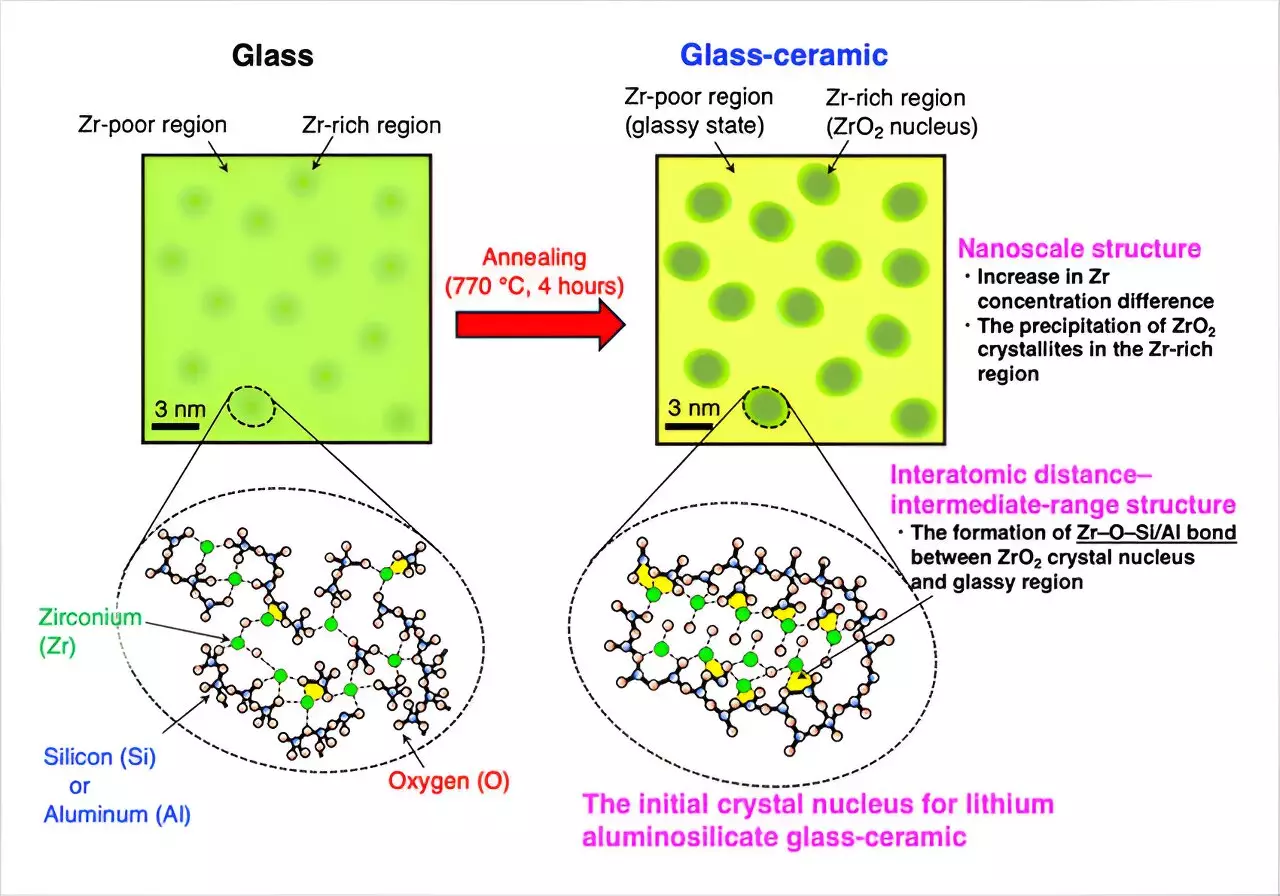The quest for stronger, heat-resistant materials has reached a pivotal point with the groundbreaking research by a collaborative team from NIMS, AGC Inc., and JASRI. Their recent study, published in *NPG Asia Materials*, highlights the initial stages of glass transforming into glass-ceramic through a process known as partial crystallization. This finding is not merely an incremental step; it is a monumental leap towards understanding the complex nature of glass materials that we often take for granted.
The study’s significance lies in its exploration of crystal nucleation—a still-puzzling phenomenon within the realm of materials science. By employing cutting-edge techniques, especially synchrotron X-ray multiscale structural analysis, the researchers navigated previously uncharted territories of glass structure at various scales. The implications of their work extend far beyond theoretical understanding; they herald a new era of developing functional materials that can withstand both heat and wear.
From Glass to Glass-Ceramic: The Role of Composition
The transition from raw glass to glass-ceramic necessitates a well-calibrated approach to its chemical composition. The researchers focused on zirconium oxide (ZrO2)-doped lithium aluminosilicate glasses, which are pivotal in numerous industrial applications. It is here that their meticulous control over composition becomes vital; the glass matrix must be designed to encourage crystal nucleation during heat treatment. What’s astonishing is how the researchers successfully mapped the formation of crystal nuclei that serve as the foundation for larger crystal structures during the process.
Previous understanding of this transformation was fragmented and incomplete. However, through detailed nanoscale structural measurements, the team identified an intriguing pattern: variations in zirconium concentration between Zr-rich and Zr-poor regions within the glass became apparent with heat exposure. This differentiation plays a crucial role in where crystal nuclei emerge—an insight that may redefine how we approach the engineering of glass materials.
Revolutionary Insights into Crystal Structure
One of the most remarkable achievements of this research is the identification of Zr-O-Si/Al bonds around ZrO2 crystal nuclei. These relationships illuminate the intricate dance between the atoms, offering a glimpse into how these nuclei form and develop. This is not just academic knowledge; it provides a tangible framework for future material synthesis and innovation.
The model proposed by the team showcases a coherent explanation of crystal nucleation mechanisms, connecting atomic interactions to nanostructural development without contradictions. This cohesion in their findings is a rarity in scientific research, indicating a robust understanding that paves the way for practical applications.
Future Impacts on Material Science
The sophisticated structural analysis methodologies established by this team are poised to have far-reaching implications. They hold the potential to explore and explain the behaviors of materials with complex compositions and disordered atomic structures, allowing scientists to engineer unique characteristics into emerging functional materials. By harnessing the insights from this study, researchers could indeed find a pathway toward developing glass-ceramics with enhanced thermal stability and durability, further pushing the boundaries of what materials can achieve in various practical applications.
As we look toward the horizon of material innovation, the implications of this groundbreaking research resonate not only within laboratories but in everyday lives where stronger, more resilient materials can enhance technology as we know it.

